
By Kasey Cantwell, Expedition Coordinator - NOAA Office of Ocean Exploration and Research
April 27, 2017
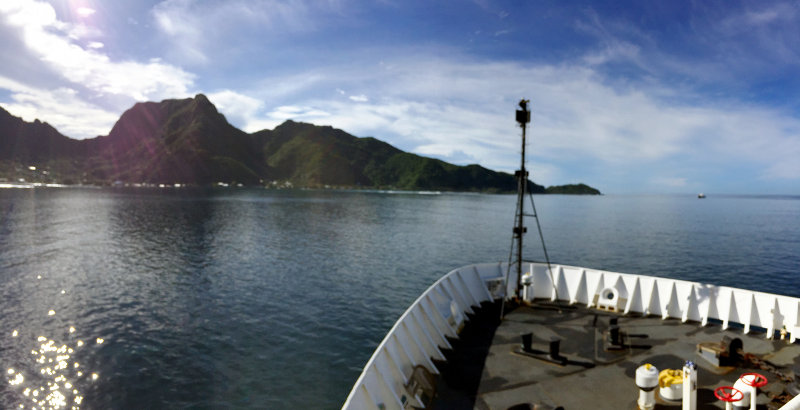
NOAA Ship Okeanos Explorer pulls out of Pago Pago, American Samoa and heads to the first dive site in the Aunuʻu Unit of the National Marine Sanctuary of American Samoa. Image courtesy of the NOAA Office of Ocean Exploration and Research, Mountains in the Deep: Exploring the Central Pacific Basin. Download larger version (jpg, 8.4 MB).
Mountains in the Deep: Exploring the Central Pacific Basin is my dream expedition. During my first semester in college, I read a series of papers about the biodiversity at Kingman Reef. As a student of marine science, I hoped that someday I could see these coral reefs for myself. I never imagined that I would find myself on an expedition to explore the deepwater areas of what has since become the Kingman Reef and Johnston Atoll Unit of the Pacific Remote Island Marine National Monument (PRIMNM). At the time, I had no idea about how little we understood about the deep sea, especially in the areas that the United States manages.
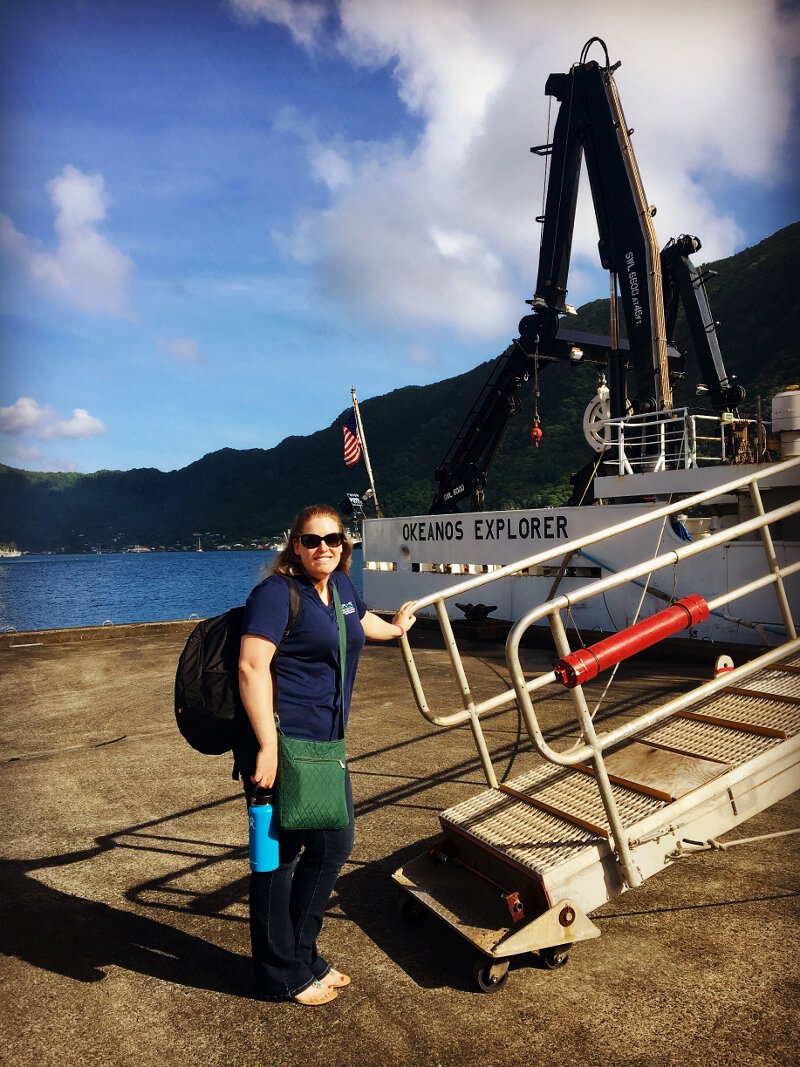
Expedition Coordinator Kasey Cantwell prepares to board NOAA Ship Okeanos Explorer to embark on the Mountains in the Deep: Exploring the Central Pacific Basin expedition. Image courtesy of the NOAA Office of Ocean Exploration and Research, Mountains in the Deep: Exploring the Central Pacific Basin. Download larger version (jpg, 4.3 MB).
Planning for this expedition started at the end of 2014, as part of the Campaign to Address Pacific monument Science, Technology, and Ocean NEeds (CAPSTONE). During the initial planning phase, NOAA laid out priorities to better understand the deep waters of U.S. marine protected areas in the central and western Pacific. Mountains in the Deep is the fourth CAPSTONE expedition to focus on the Pacific Remote Islands Marine National Monument, now known as Pacific Islands Heritage Marine National Monument. With this expedition, we will have visited every unit of PRIMNM as part of CAPSTONE and have collected terabytes of data that will help managers and scientists better understand these unique areas.
As we got closer to the start of the expedition, partnerships developed between organizations with mutual interests. Partnerships help us ensure that the baseline data NOAA Ship Okeanos Explorer collects is beneficial and used by as many people as possible. We also worked with the science community to identify specific dive targets.
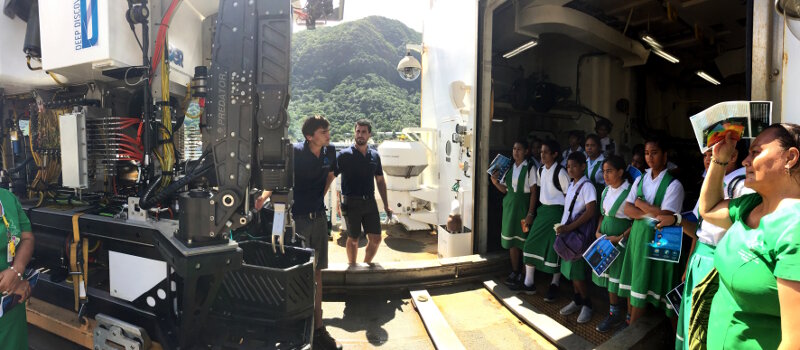
Levi Unema and Sean Kennison, remotely operated vehicle (ROV) engineers with the Global Foundation for Ocean Exploration, teach students in American Samoa about ROV Deep Discoverer during a ship tour. Image courtesy of the NOAA Office of Ocean Exploration and Research, Mountains in the Deep: Exploring the Central Pacific Basin. Download larger version (jpg, 11.1 MB).

Science leads Scott France and Del Bohnenstiehl leading a ship tour in control room aboard NOAA Ship Okeanos Explorer. Altogether, 400 people were given ship tours in American Samoa. Image courtesy of the NOAA Office of Ocean Exploration and Research, Mountains in the Deep: Exploring the Central Pacific Basin. Download larger version (jpg, 10.2 MB).
We received input from scientists at NOAA and from the Cook Islands, New Zealand, and academic institutions all over the United States. Our mutual goal is to shine a light on the wonders of the deep. These scientists, and dozens more, will use telepresence to participate from their home institutions and Exploration Command Centers all over the world.
While our scientists were busy refining our upcoming operations, the NOAA Office of Ocean Exploration and Research's Engagement Team was working with our partners at National Marine Sanctuary of American Samoa to wrap up our activities in the South Pacific. We held a series of outreach events designed to share the results of NOAA's recent expeditions in the area. We conducted ship tours for local students and teachers; conducted a professional development workshop for teachers; and shared our results via presentations at the Tauese P.F. Sunia Ocean Center, at the Office of Samoan Affairs, and on local media stations. In just four short days, we reached close to 1,500 people, sharing the excitement of ocean exploration and our recent discoveries.
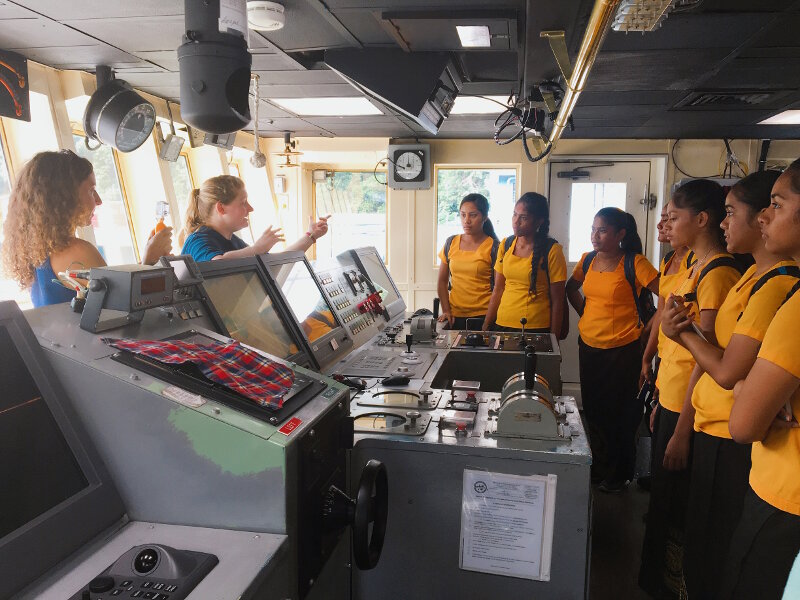
Engaging with local students is a key component of Okeanos Explorer missions. In this photo, Expedition Coordinator Kasey Cantwell teaches a group of students from American Samoa about the bridge of the ship during a tour. Image courtesy of the NOAA Office of Ocean Exploration and Research, Mountains in the Deep: Exploring the Central Pacific Basin. Download larger version (jpg, 3.7 MB).
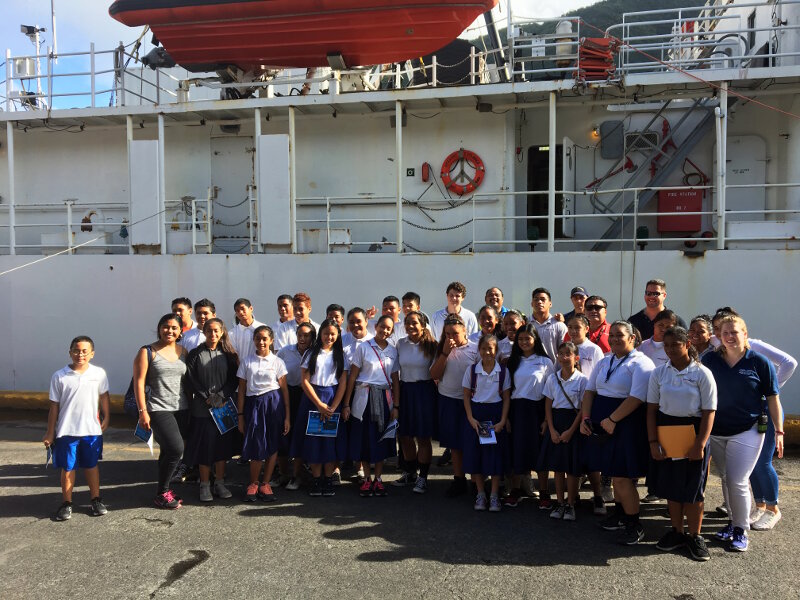
Students from American Samoa tour NOAA Ship Okeanos Explorer. Seen on the far right of the second row is Expedition Coordinator Kasey Cantwell and on the far right of the last row is the expedition mapping lead, Mike White. Image courtesy of the NOAA Office of Ocean Exploration and Research, Mountains in the Deep: Exploring the Central Pacific Basin. Download larger version (jpg, 5.9 MB).
Yesterday, we had one last day in port to finish cruise preparations. We set out this morning on what we hope will be our most exciting expedition yet. Stay tuned to the live video feed and the mission web content to see what we discover – I can't wait!
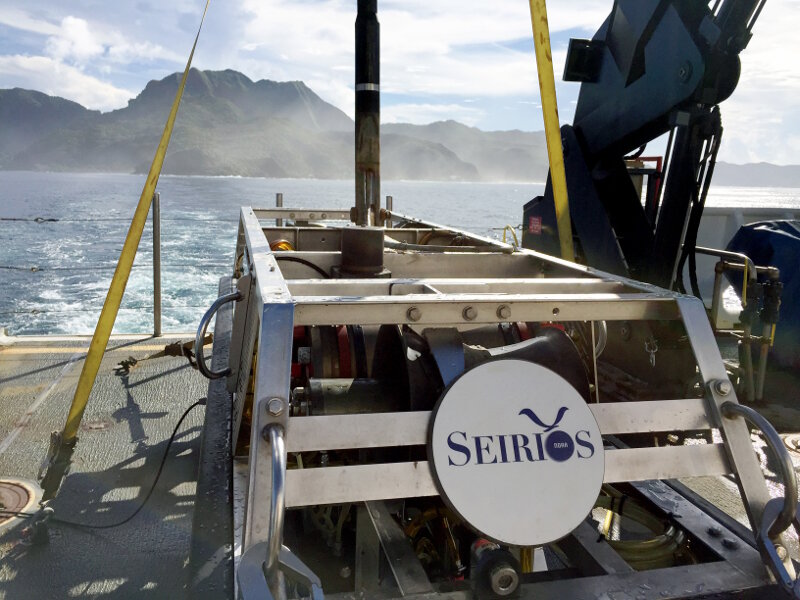
Remotely operated vehicle (ROV) Seirios is on deck and ready for Dive 01 of the expedition. Seirios and Deep Discoverer together make up the dual-body ROV system on NOAA Ship Okeanos Explorer. Image courtesy of the NOAA Office of Ocean Exploration and Research, Mountains in the Deep: Exploring the Central Pacific Basin. Download larger version (jpg, 4.9 MB).